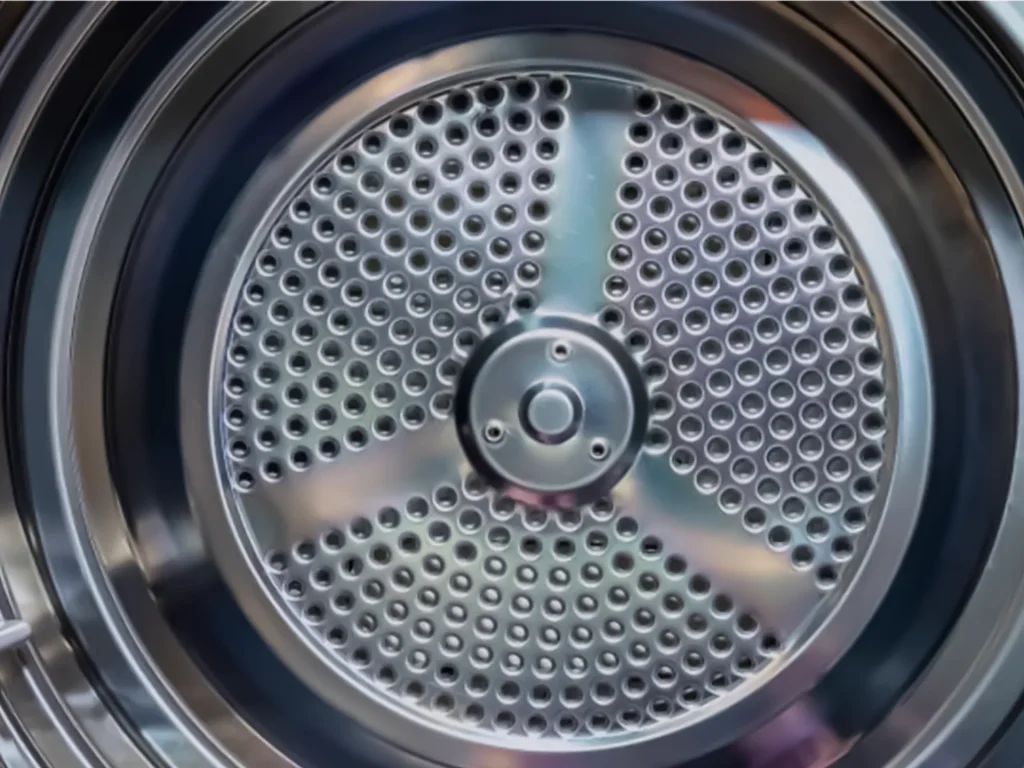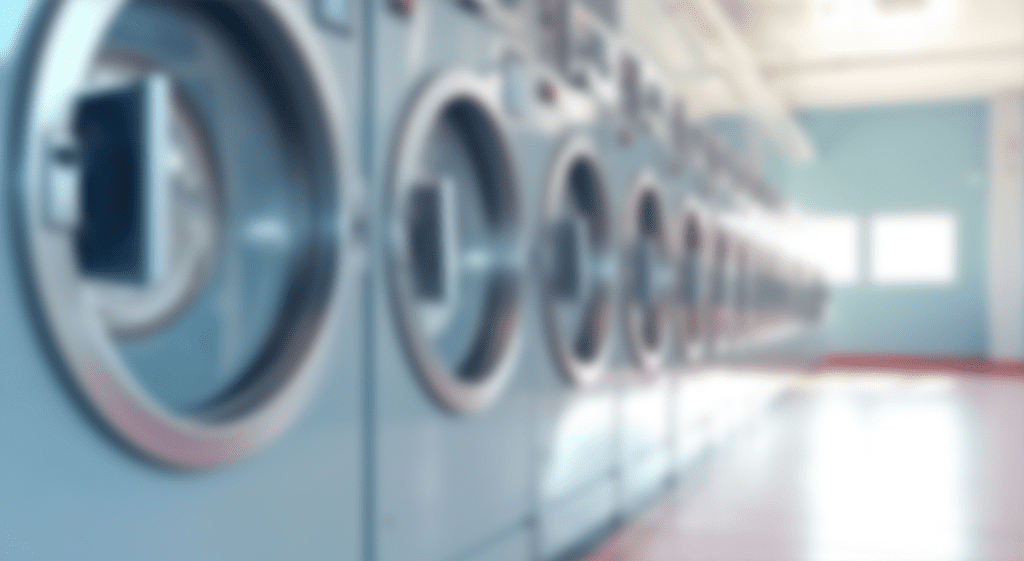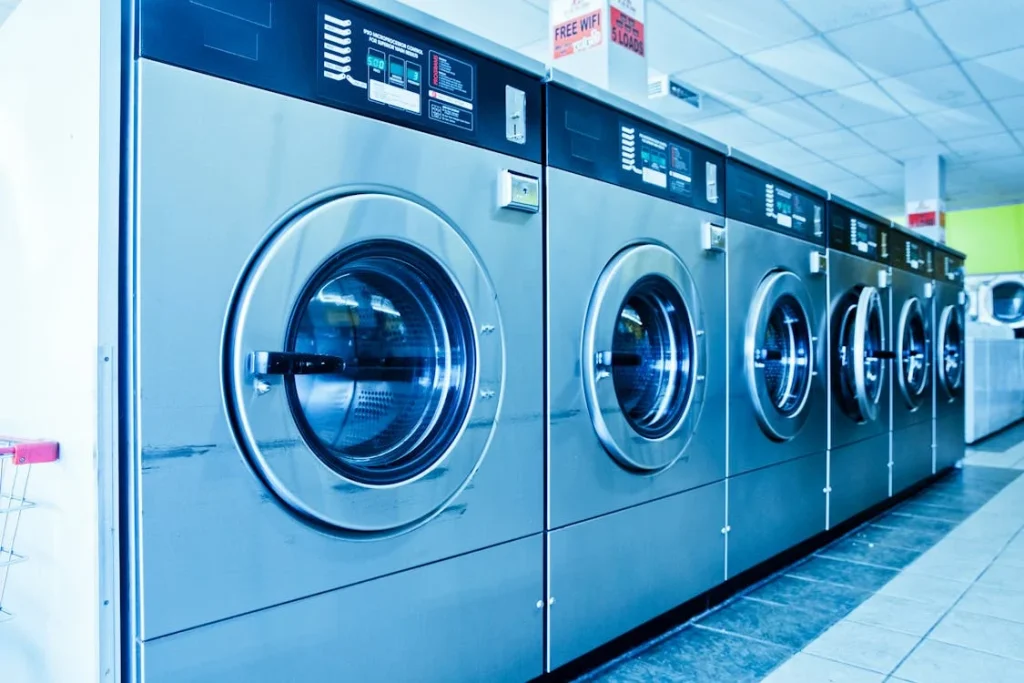When you step into a hotel, hospital, or restaurant, the last thing on your mind is the mountain of laundry keeping everything fresh. But behind the scenes, industrial laundries work tirelessly to maintain cleanliness and hygiene. These facilities process tons of linens, uniforms, and textiles daily, ensuring a spotless environment for countless industries. Let’s pull back the curtain on the fascinating world of industrial laundry.
Tabla de contenidos
- 1. What is Industrial Laundry?
- 2. Types of Industrial Laundry Equipment
- 3. Benefits of Industrial Laundry Equipment
- 4. The Science Behind Industrial Laundry Processes
- 5. The Role of Technology in Industrial Laundry
- 6. Key Benefits of Industrial Laundry Services
- 7. Common Challenges in Industrial Laundry and How They’re Overcome
- 8. Future Trends in Industrial Laundry
- 9. A Day in the Life of an Industrial Laundry Worker
- 10. Conclusion: The Future of Clean is Industrial
- 11. FAQs
1. What is Industrial Laundry?

1.1. Understanding the Industrial Laundry Industry
An industrial laundry is a specialized facility that cleans and processes large quantities of textiles for businesses and institutions. Unlike commercial laundries, which cater primarily to individual consumers, industrial laundries handle much larger volumes of laundry and often have more stringent requirements for cleanliness and sanitation.
Industrial laundries serve a wide range of industries, including healthcare, hospitality, manufacturing, and transportation. Hospitals and clinics rely on industrial laundries to process medical linens and scrubs, while hotels and restaurants need clean towels, sheets, and tablecloths. Manufacturing facilities may require clean uniforms and workwear, while transportation companies need to keep their linens and blankets fresh and sanitized.
1.2. Difference Between Industrial and Commercial Laundry
People often confuse commercial and industrial laundry services. While both handle bulk washing, industrial laundries operate on a much larger scale. Commercial laundries serve businesses like salons or gyms, while industrial laundries cater to hospitals, hotels, and factories, where hygiene and speed are paramount.
1.3. Who Relies on Industrial Laundry Services?
Many industries depend on industrial laundries, including:
Hotels & Resorts – Clean linens, towels, and uniforms are essential for guest comfort.
Hospitals & Healthcare Facilities – Sterile sheets and scrubs ensure patient safety.
Factories & Workplaces – Uniforms must be cleaned thoroughly for hygiene and durability.
Restaurants & Catering Services – Tablecloths, napkins, and chef uniforms require regular deep cleaning.
2. Types of Industrial Laundry Equipment
2.1. Industrial Washing Machines: The Backbone of Laundry Operations
High-capacity washers use powerful agitation and specialized detergents to clean heavy-duty textiles effectively. Features like programmable wash cycles and automated detergent dispensers optimize efficiency.
2.2. Industrial Dryers: Fast and Efficient Drying Solutions
Industrial dryers use controlled heat, airflow, and moisture sensors to ensure quick drying without fabric damage. Energy-efficient models reduce operational costs while maintaining performance.
2.3. Ironing and Finishing Machines: Perfecting the Final Look
Large-scale ironing and pressing machines remove wrinkles, providing a crisp and professional appearance for linens and uniforms. Folding systems streamline packaging and organization.
2.4. Disinfection and Sterilization Equipment
Hospitals and laboratories require specialized equipment with UV or ozone sanitation to meet stringent hygiene standards.
3. Benefits of Industrial Laundry Equipment
3.1. Enhanced Efficiency and Productivity
Automated processes reduce manual labor and processing time, allowing businesses to handle large laundry volumes quickly.
3.2. Cost Savings Over Time
Although initial investment costs are high, industrial machines reduce water, energy, and detergent consumption, leading to significant long-term savings.
3.3. Improved Hygiene and Safety
Industrial equipment ensures thorough cleaning, eliminating bacteria, viruses, and allergens. This is crucial for hospitals and food service industries.
3.4. Durability and Reliability
Built to withstand heavy loads, industrial laundry machines offer years of consistent performance, minimizing downtime and maintenance costs.
4. The Science Behind Industrial Laundry Processes
4.1. Sorting: The First Step Toward Efficiency
Before washing, laundry is sorted based on fabric type, color, and level of contamination. This step ensures optimal washing conditions and prevents damage. Heavy-duty textiles require stronger cycles, while delicate fabrics demand gentle handling.
4.2. Washing: More Than Just Soap and Water
Industrial washers use specialized detergents, disinfectants, and precise water temperatures to break down dirt, bacteria, and stains. High-speed agitators and programmable wash cycles ensure textiles emerge spotless and sanitized.
4.3. Rinsing and Extracting: Removing Every Last Residue
After washing, powerful extractors remove excess water, cutting drying time significantly. This high-speed spinning process prevents fabric damage while ensuring efficiency in the next stage.
4.4. Drying: Achieving the Perfect Balance of Heat and Time
Industrial dryers use controlled heat and moisture sensors to prevent fabric shrinkage and damage. Overdrying weakens fibers, while under-drying can lead to mildew. Precision is key to ensuring longevity and hygiene.
4.5. Ironing and Finishing: The Final Touch
To achieve crisp, professional results, linens pass through large-scale ironing and finishing machines. Pressing removes wrinkles, and folding machines ensure garments are neatly stacked and ready for delivery.
5. The Role of Technology in Industrial Laundry
5.1. Smart Washers and AI-Driven Efficiency
Advanced industrial washers use AI to determine optimal water levels, detergent amounts, and cycle times, minimizing waste and improving efficiency.
5.2. Water and Energy Conservation: Sustainable Practices
With sustainability in focus, modern laundries use water recycling systems, energy-efficient dryers, and eco-friendly detergents to reduce environmental impact.
5.3. The Impact of Automation on Productivity
Automation streamlines industrial laundry operations. From automated folding machines to robotic sorting systems, technology ensures precision and efficiency while reducing labor costs.
6. Key Benefits of Industrial Laundry Services
6.1. Cost Savings and Efficiency
Outsourcing laundry saves businesses time, labor, and equipment costs. Industrial laundries handle bulk loads faster and more effectively than in-house operations.
6.2. Hygiene and Compliance with Regulations
Industries like healthcare must meet strict sanitation standards. Industrial laundries follow regulated processes to ensure maximum cleanliness, reducing the risk of infections.
6.3. Scalability for Growing Businesses
As businesses expand, their laundry needs grow. Industrial laundries offer scalable solutions, handling increasing loads without compromising quality.
7. Common Challenges in Industrial Laundry and How They’re Overcome
7.1. Handling Large Loads Without Compromising Quality
Balancing efficiency and quality requires advanced machinery and optimized workflows. High-capacity washers with programmable settings ensure consistency.
7.2. Ensuring Fabric Longevity and Minimal Wear
Industrial laundries use precise washing cycles, temperature controls, and fabric-safe detergents to prevent excessive wear and tear.
7.3. Meeting Strict Industry Standards
Regular audits, compliance checks, and stringent hygiene protocols help industrial laundries meet the highest standards of cleanliness and safety.
8. Future Trends in Industrial Laundry
8.1. The Rise of Green Laundry Practices
Sustainability is driving innovation in industrial laundry, with biodegradable detergents, water reclamation systems, and energy-efficient machines becoming the norm.
8.2. Digitalization and Remote Monitoring
Smart laundry systems with IoT capabilities allow remote monitoring of machines, ensuring real-time adjustments for efficiency and maintenance.
8.3. Advanced Fabric Care Technologies
New textile-friendly technologies, such as ultrasonic cleaning and low-temperature ozone washing, are emerging to enhance fabric care while reducing energy consumption.
9. A Day in the Life of an Industrial Laundry Worker
Working in an industrial laundry can be a physically demanding job. Laundry workers are responsible for a variety of tasks, including sorting, washing, drying, ironing, and packaging laundry. They must be able to work quickly and efficiently to meet the demands of the job.
Despite the challenges, many people find working in an industrial laundry to be rewarding. Laundry workers have the opportunity to make a positive impact on their community by providing essential services to businesses and institutions. They also enjoy the satisfaction of seeing a job well done and knowing that they are contributing to a clean and healthy environment.
10. Conclusion: The Future of Clean is Industrial
Industrial laundries play a crucial role in keeping businesses running smoothly, ensuring hygiene, efficiency, and sustainability. As technology advances, the industry is becoming even more eco-friendly and cost-effective. Whether it’s a hospital bed sheet or a hotel towel, industrial laundry ensures cleanliness remains a top priority. Ready to optimize your laundry operations? Contact us today to learn more about how our industrial laundry solutions can benefit your business.
11. FAQs
1. How do industrial laundries differ from regular laundromats?
Industrial laundries operate on a much larger scale, processing thousands of pounds of laundry per hour with high-tech, automated machinery.
2. What detergents do industrial laundries use?
They use powerful, commercial-grade detergents designed for deep cleaning and disinfecting large volumes of textiles while being eco-friendly.
3. Can industrial laundries handle delicate fabrics?
Yes! Advanced settings allow for specialized washing cycles to protect delicate fabrics while ensuring thorough cleaning.
4. How do industrial laundries reduce environmental impact?
Many facilities implement water recycling, energy-efficient equipment, and biodegradable detergents to lower their carbon footprint.
5. Is outsourcing laundry more cost-effective than in-house laundering?
Yes, outsourcing eliminates the need for expensive equipment, labor, and maintenance, making it a cost-efficient choice for many businesses.
Here are some other articles that we think might interest you:
Environmental Impact of Industrial Laundry


